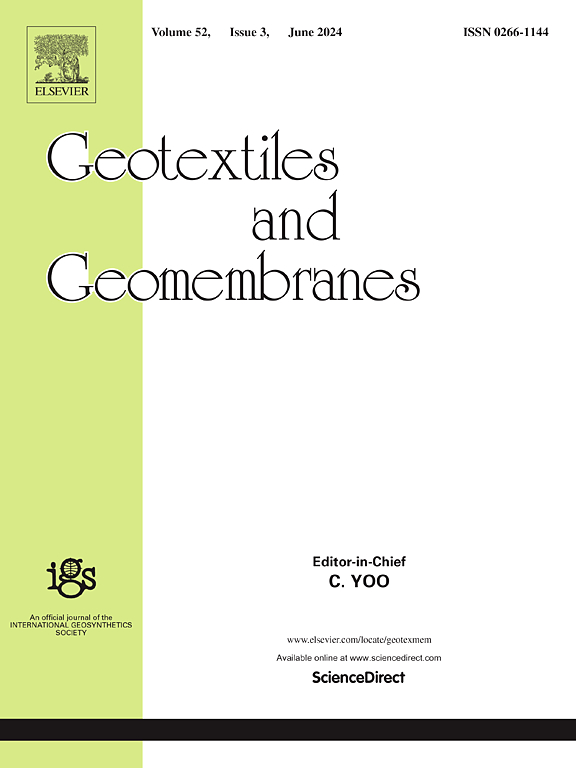Critical state mechanics-based arching model for pile-supported embankments
IF 6.2
1区 工程技术
Q1 ENGINEERING, GEOLOGICAL
引用次数: 0
Abstract
The study and application of soil arching theory in geosynthetic-reinforced pile-supported (GRPS) embankments have gained increasing attention, as accurate arching estimation significantly influences load-deflection behavior of structures. While most existing models rely on Rankine's earth pressure theory, which applies primarily to granular soils and neglects cohesion effects. This paper employs three-dimensional numerical simulations to examine the impact of soil cohesion on soil arching mechanisms in pile-supported embankments. Results indicate that cohesion enhances load transfer to piles, with arching efficacy increasing nonlinearly before stabilizing at higher cohesion values. Building on these findings, the ground reaction curve (GRC) model is proposed to predict arching behavior in both cohesive and non-cohesive embankments at various deformation stages. By integrating critical state soil mechanics with the concentric arch model, the transition between maximum and critical arching states is captured through changes in the mobilized friction angle with relative displacement. Model validation against two well-instrumented case studies demonstrates its accuracy, particularly in accounting for soil cohesion. Moreover, the maximum arching model better predicts GRPS embankments under small deformations (relative displacement <4 %), while the critical arching model is more suitable for large deformations (relative displacement >6 %). The proposed model effectively captures arching behavior improvements in both cohesive and non-cohesive soils.
基于临界状态力学的桩基路堤拱模型
土拱理论在土工合成桩支撑(GRPS)路堤中的研究和应用越来越受到重视,因为准确的土拱估算对结构的荷载-挠曲行为有重要影响。而现有的大多数模型依赖于Rankine土压力理论,该理论主要适用于颗粒土而忽略了粘聚效应。本文采用三维数值模拟的方法研究了土体粘聚力对桩基路堤土拱机制的影响。结果表明:粘聚力增强了荷载向桩的传递,在较高的粘聚力值下,拱效率呈非线性增长,趋于稳定;在此基础上,提出了地基反力曲线(GRC)模型来预测粘性和非粘性路堤在不同变形阶段的拱行为。将临界状态土力学与同心拱模型相结合,通过动员摩擦角随相对位移的变化来捕捉最大拱状态与临界拱状态之间的过渡。模型验证对两个良好的仪器案例研究证明了其准确性,特别是在考虑土壤凝聚力。最大拱模型较好地预测了小变形(相对位移>; 4%)下的GRPS路堤,而临界拱模型更适合于大变形(相对位移>; 6%)下的GRPS路堤。所提出的模型有效地捕捉了粘性和非粘性土壤中拱行为的改善。
本文章由计算机程序翻译,如有差异,请以英文原文为准。
求助全文
约1分钟内获得全文
求助全文
来源期刊

Geotextiles and Geomembranes
地学-地球科学综合
CiteScore
9.50
自引率
21.20%
发文量
111
审稿时长
59 days
期刊介绍:
The range of products and their applications has expanded rapidly over the last decade with geotextiles and geomembranes being specified world wide. This rapid growth is paralleled by a virtual explosion of technology. Current reference books and even manufacturers' sponsored publications tend to date very quickly and the need for a vehicle to bring together and discuss the growing body of technology now available has become evident.
Geotextiles and Geomembranes fills this need and provides a forum for the dissemination of information amongst research workers, designers, users and manufacturers. By providing a growing fund of information the journal increases general awareness, prompts further research and assists in the establishment of international codes and regulations.
 求助内容:
求助内容: 应助结果提醒方式:
应助结果提醒方式:


